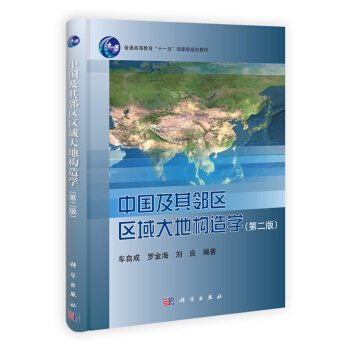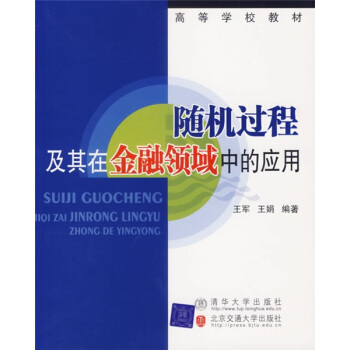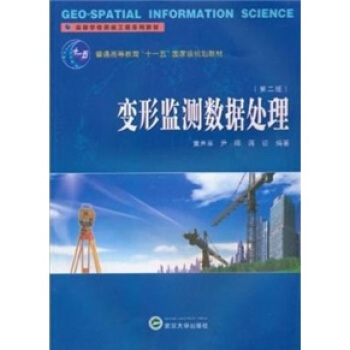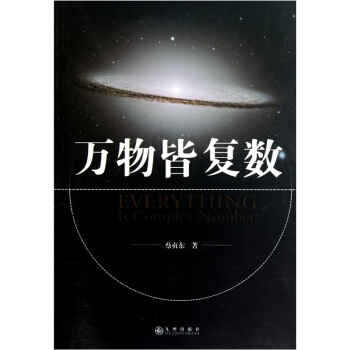![数理统计问题与解答 [Mathematical Statistics:Exercises and Solutions]](https://pic.windowsfront.com/10562608/0eb79f48-b80c-4dc9-812c-ab666e398dc9.jpg)

具体描述
内容简介
this book consists of solutions to 400 exercises, over 95% of which arein my book Mathematical Statistics. Many of them are standard exercisesthat also appear in other textbooks listed in the references. It is onlya partial solution manual to Mathematical Statistics (which contains over900 exercises). However, the types of exercise in Mathematical Statistics notselected in the current book are (1) exercises that are routine (each exerciseselected in this book has a certain degree of difficulty), (2) exercises similarto one or several exercises selected in the current book, and (3) exercises foradvanced materials that are often not included in a mathematical statisticscourse for first-year Ph.D. students in statistics (e.g., Edgeworth expan-sions and second-order accuracy of confidence sets, empirical likelihoods,statistical functionals, generalized linear models, nonparametric tests, andtheory for the bootstrap and jackknife, etc.). On the other hand, this isa stand-alone book, since exercises and solutions are comprehensibleindependently of their source for likely readers. To help readers notusing this book together with Mathematical Statistics, lists of notation,terminology, and some probability distributions are given in the front ofthe book.内页插图
目录
PrefaceNotation
Terminology
Some Distributions
Chapter 1. Probability Theory
Chapter 2. Fundamentals of Statistics
Chapter 3. Unbiased Estimation
Chapter 4. Estimation in Parametric Models
Chapter 5. Estimation in Nonparametric Models
Chapter 6. Hypothesis Tests
Chapter 7. Confidence Sets
References
Index
前言/序言
Since the publication of my book Mathematical Statistics (Shao, 2003), Ihave been asked many times for a solution manual to the exercises in mybook. Without doubt, exercises form an important part of a textbookon mathematical statistics, not only in training students for their researchability in mathematical statistics but also in presenting many additionalresults as complementary material to the main text. Written solutionsto these exercises are important for students who initially do not havethe skills in solving these exercises completely and are very helpful forinstructors of a mathematical statistics course (whether or not my bookMathematical Statistics is used as the textbook) in providing answers tostudents as well as finding additional examples to the main text. Moti-vated by this and encouraged by some of my colleagues and Springer-Verlageditor John Kimmel, I have completed this book, Mathematical Statistics:Exercises and Solutions.This book consists of solutions to 400 exercises, over 95% of which arein my book Mathematical Statistics. Many of them are standard exercisesthat also appear in other textbooks listed in the references. It is onlya partial solution manual to Mathematical Statistics (which contains over900 exercises). However, the types of exercise in Mathematical Statistics notselected in the current book are (1) exercises that are routine (each exerciseselected in this book has a certain degree of difficulty), (2) exercises similarto one or several exercises selected in the current book, and (3) exercises foradvanced materials that are often not included in a mathematical statisticscourse for first-year Ph.D. students in statistics (e.g., Edgeworth expan-sions and second-order accuracy of confidence sets, empirical likelihoods,statistical functionals, generalized linear models, nonparametric tests, andtheory for the bootstrap and jackknife, etc.). On the other hand, this isa stand-alone book, since exercises and solutions are comprehensibleindependently of their source for likely readers. To help readers notusing this book together with Mathematical Statistics, lists of notation,terminology, and some probability distributions are given in the front ofthe book.
用户评价
终于拿到这本《数理统计问题与解答》了,迫不及待地翻开了它。封面设计简洁大方,但第一眼吸引我的是它厚实的装帧,给人一种扎实可靠的感觉,仿佛里面藏着无尽的宝藏。我是一名统计学专业的学生,平时做习题时经常会遇到一些卡壳的地方,对着课本上的理论一遍遍推导,有时还是会感到迷茫。市面上也有不少习题集,但总觉得它们的讲解不够透彻,或者与我的教材关联性不强。我希望能找到一本真正能够帮助我理解统计思想,掌握解题技巧的书,而不是简单地罗列答案。这本书的名字让我眼前一亮,"问题与解答"的组合,预示着它将直接切中我的痛点。我尤其期待书中能够包含一些典型的、具有代表性的题目,能够涵盖数理统计的各个重要章节,例如概率论基础、参数估计、假设检验、回归分析等等。如果能对每个题目都提供详细的解题思路、关键步骤的推导,以及一些易错点的提示,那简直就是雪中送炭了。我希望这本书能够成为我在学习数理统计过程中的得力助手,帮助我巩固知识,提升解题能力,最终在考试中取得好成绩。
评分我是一名正在攻读统计学硕士学位的学生,我的学习压力很大,需要高效地掌握大量的理论知识和解题技巧。《数理统计问题与解答》这本书,无疑是我学习路上的一个重要备选项。我希望这本书能够紧密结合当下数理统计研究的前沿和教学大纲的要求。我尤其看重它在题目选择上的深度和广度,能否覆盖到一些经典难题,以及一些在最新的研究领域中常见的统计模型和方法。对于解答部分,我期待它能够提供多样的解题思路,比如是否可以用不同的方法解决同一个问题,每种方法的优劣是什么,以及如何选择最合适的解题策略。更重要的是,我希望它能够展示清晰的推导过程,并且对于其中的关键引理和定理的应用做出详细的说明,让我能够知其然,更知其所以然。如果书中还能包含一些关于模型选择、假设检验功效分析等方面的案例,那将是对我非常有益的补充,能够帮助我更好地准备论文和应对未来的研究挑战。
评分我是一位在数据分析领域摸爬滚打多年的从业者,虽然日常工作中接触最多的可能是应用统计,但基础的数理统计理论仍然是我的根基。随着人工智能和大数据技术的飞速发展,我对更深层次的统计理论有了新的认识和需求。过去,我更多的是在实践中学习,遇到问题就去查资料,但有时感觉知识体系不够系统。我一直在寻找一本能够帮助我回顾和深化数理统计理解的书籍。《数理统计问题与解答》这个书名,对于我来说,不仅仅是“做题”的工具,更是一种“梳理”和“精进”的契机。我期望这本书的题目能够覆盖到一些我可能在实践中疏于回顾但又至关重要的概念,例如大数定律、中心极限定理的各种形式及其应用,或者一些高级的估计方法和检验方法。我更看重的是解答部分能否提供一些不同角度的思考方式,或者将理论知识与实际应用场景巧妙地结合起来,让我看到理论的生命力。一本好的习题解答,不应该只是给出标准答案,更应该教会读者“如何思考”和“如何解决问题”,培养一种严谨的科学态度。
评分作为一个对数学和统计学都充满好奇的业余爱好者,我一直在寻找能够系统学习数理统计知识的途径。市面上有很多介绍统计学概念的书籍,但往往流于表面,或者缺乏足够多的练习来巩固理解。《数理统计问题与解答》这个名字,让我觉得它可能是一本非常适合我这种自学者入门的书。我希望它能从最基础的概念讲起,比如随机变量、概率分布,然后循序渐进地引导我深入到更复杂的统计推断。最吸引我的是“解答”二字,这通常意味着我可以在遇到困难时获得清晰的指导。我特别期待书中能有很多不同难度的题目,从简单的概念辨析到复杂的计算和证明,能够让我逐步建立信心。如果题目能配上详细的步骤讲解,并且能够解释清楚为什么这样做,而不是仅仅给出一个公式,那将对我帮助巨大。我希望这本书能让我真正理解数理统计的逻辑和精髓,而不仅仅是死记硬背公式,能够在我脑海中构建起一个完整的数理统计知识框架。
评分最近刚接触到一些关于机器学习算法的理论,发现很多算法都离不开数理统计的支撑,比如最大似然估计、贝叶斯方法等等,这让我意识到深入学习数理统计的必要性。我在网上搜索相关的学习资源时,看到了《数理统计问题与解答》这本书。从书名来看,它似乎能够提供一个很好的实践平台,让我将理论知识转化为实际操作的能力。我尤其希望这本书能够包含一些与机器学习、数据挖掘等热门领域相关的统计问题,这样我学习起来会更有方向感和动力。例如,对于参数估计,书中能否给出一些如何选择最优估计量,以及如何评估估计量性能的例子。在假设检验方面,我希望看到如何设计和进行有效的检验,以及如何解释检验结果。如果解答部分能提供一些关于R或Python等统计软件的实现思路,那将是锦上添花了。这本书的出现,让我觉得我离理解和应用复杂的统计模型又近了一步。
评分银牌会员
评分习题教程,还没有仔细阅读
评分喜欢,实用,帮我解决了很多问题!不错!很满意!
评分玻***快
评分喜欢,实用,帮我解决了很多问题!不错!很满意!
评分很不错,纸张蛮好的,是正版
评分还
评分书质量不错,物流挺快,好好学习…
评分有很多習題,可以提高解題水平,加深對數理統計的理解。
相关图书
本站所有内容均为互联网搜索引擎提供的公开搜索信息,本站不存储任何数据与内容,任何内容与数据均与本站无关,如有需要请联系相关搜索引擎包括但不限于百度,google,bing,sogou 等
© 2025 book.coffeedeals.club All Rights Reserved. 静流书站 版权所有



![偏微分方程(第3卷)(第2版) [Partial Differential Equations Ⅲ:Nonlinear Equations 2nd ed.] pdf epub mobi 电子书 下载](https://pic.windowsfront.com/11356300/rBEhUlKVTgQIAAAAAAL3-JpmtFMAAF-bQGsOwMAAvgQ936.jpg)


![光催化:环境净化与绿色能源应用探索 [Photocatalysis: Application on Environmental Purification and Green Energy] pdf epub mobi 电子书 下载](https://pic.windowsfront.com/11591981/548e8158Nd4335731.jpg)
![时间序列的理论与方法(第2版) [Time Series:Theory and Methods] pdf epub mobi 电子书 下载](https://pic.windowsfront.com/11715863/5598b09cNd0b2f433.jpg)











![微分几何在影响分析中的应用(英文版) [Application of Elementary Differential Geometry to Influence Analysis] pdf epub mobi 电子书 下载](https://pic.windowsfront.com/11080761/574261d0N8e6f3639.jpg)
